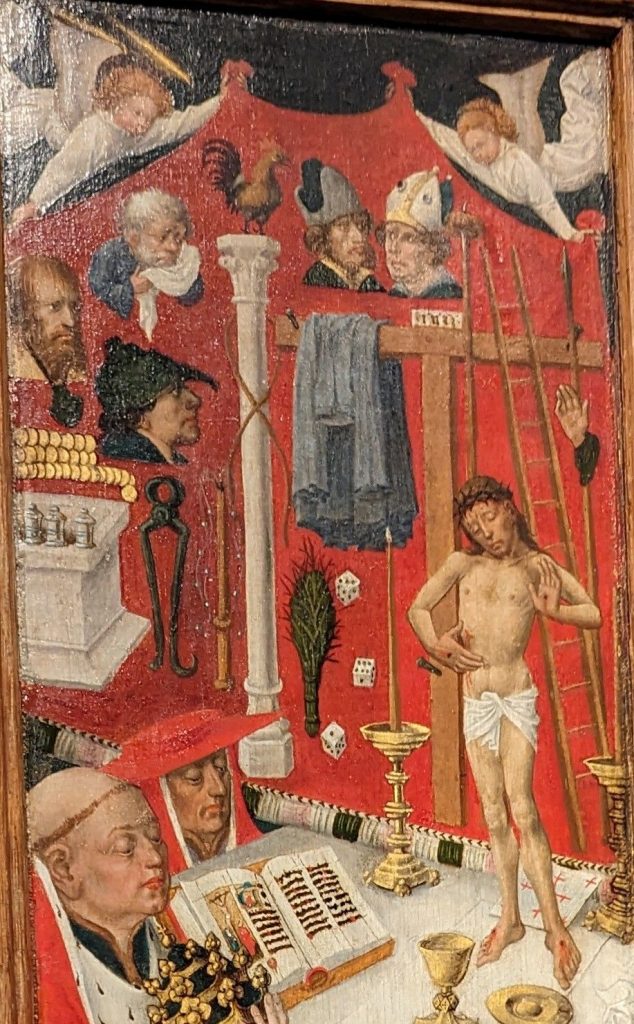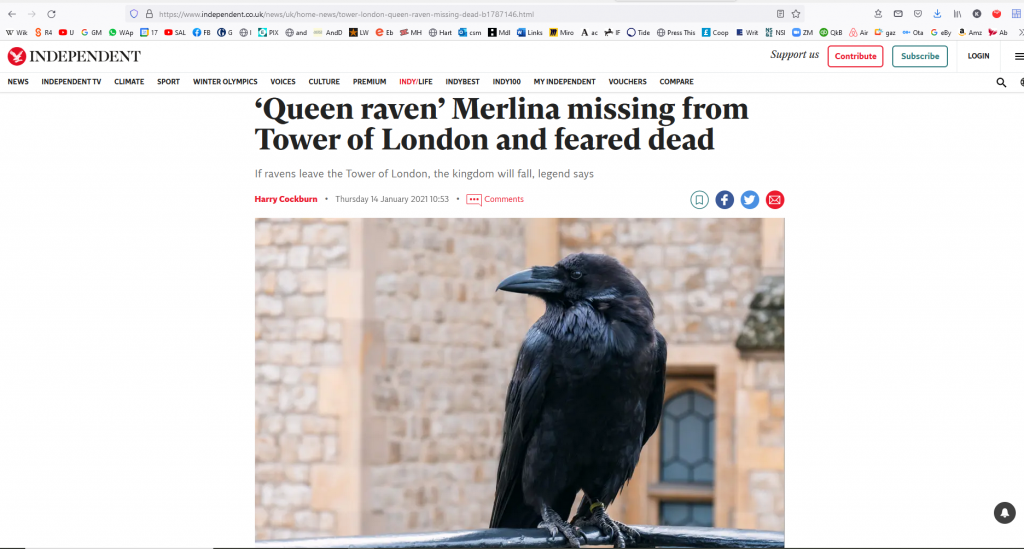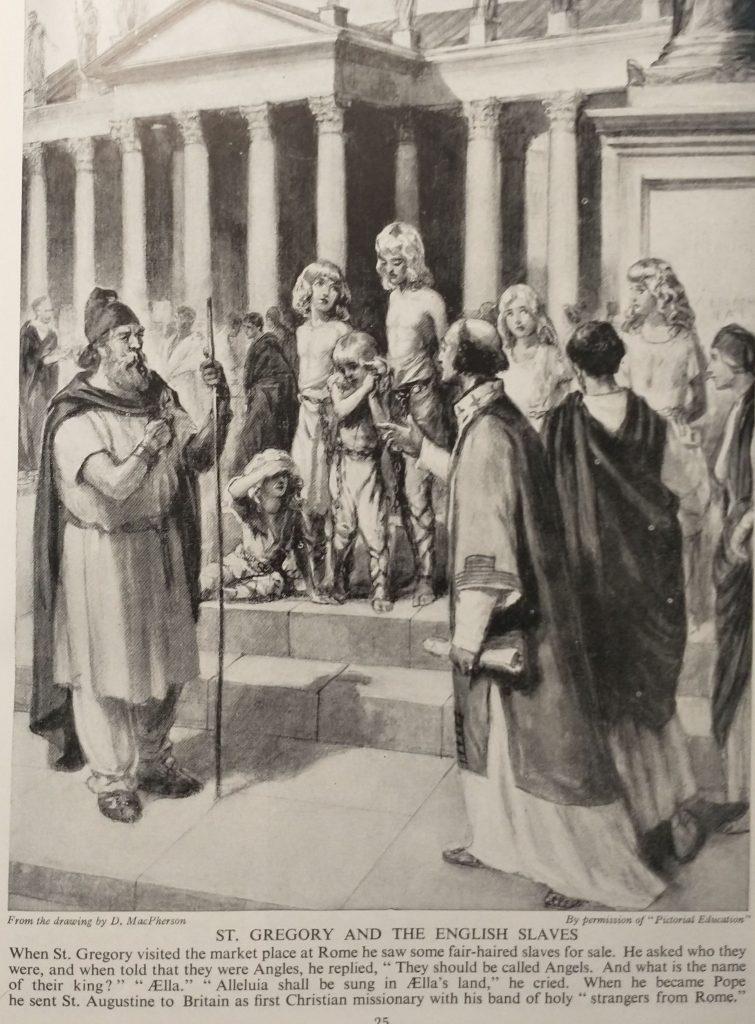
Gregorius I is known as Saint Gregory the Great. Pope from 3 September 590 to his death on 12th March 604. So 12th March is traditionally his feast day but this was changed to September 3rd, the date of his elevation to Pope, because 12th March was often in Lent.
He is the patron saint of musicians, singers, students, and teachers, because it is traditionally believed he instituted the form of plainsong known as Gregorian Chant. He was also a formidable organiser and reformer and made changes that helped the Catholic tradition survive Arian and Donatist challenges.
In the UK he is venerated with St Augustine for bringing Christianity to the largely pagan Anglo-Saxons. The caption to the illustration above tells the story of how he came to send a mission to the pagan Angles in Briton and tells the story of his two most famous puns, riffing on the similarity of the words Angles/Angels and Aella/Alleluia. But in between these two he also punned on the name of Aella’s kingdom – Deira in Northumberland, saying he would save them from the wroth of God which is ‘de ira’ in Latin.
After this incident he sent St Augustine to Canterbury to convert the Germanic peoples of the former Roman Province of Britannia. Canterbury was chosen because its King was the ‘Bretwalda’ of Britain – the most powerful King and he, Ethelbert, was married to Bertha, a French Princess already a Christian. This established a safe haven for St Augustine’s mission. And the King was baptised, shortly, after in Canterbury.
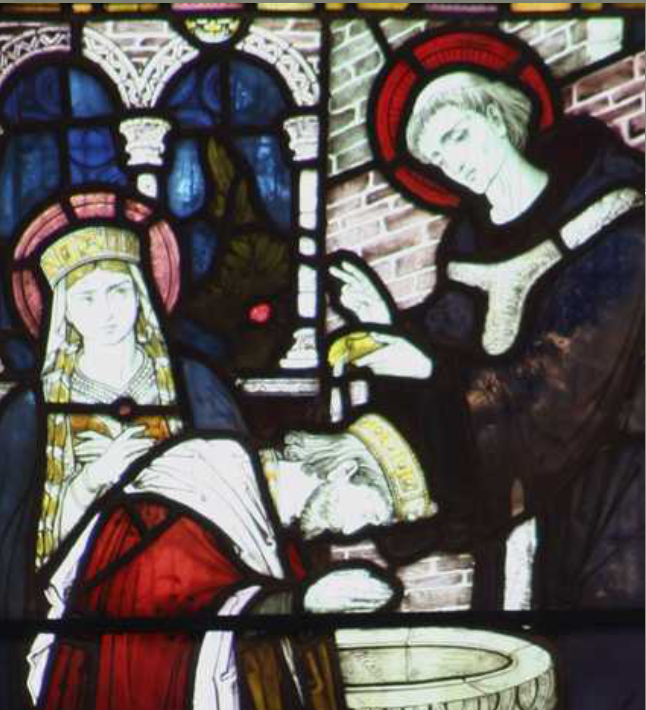
The mission came with a plan to recreate the ecclesiastical arrangements set up in the Roman period, with archbishops in the two main capitals at London and York. After Kent was converted, St Ethelbert’s nephew, Sæberht, King of Essex, received a mission from St Mellitus who established St Pauls Cathedral in London. St Paulinus was sent to convert Northumbria and established a Cathedral in York. Unfortunately, for the plan, when Sæberht died his sons returned to paganism and Mellitus was kicked out, returned to Canterbury, and ever since we have had an Archbishop of Canterbury and York and never had an Archbishop of London.
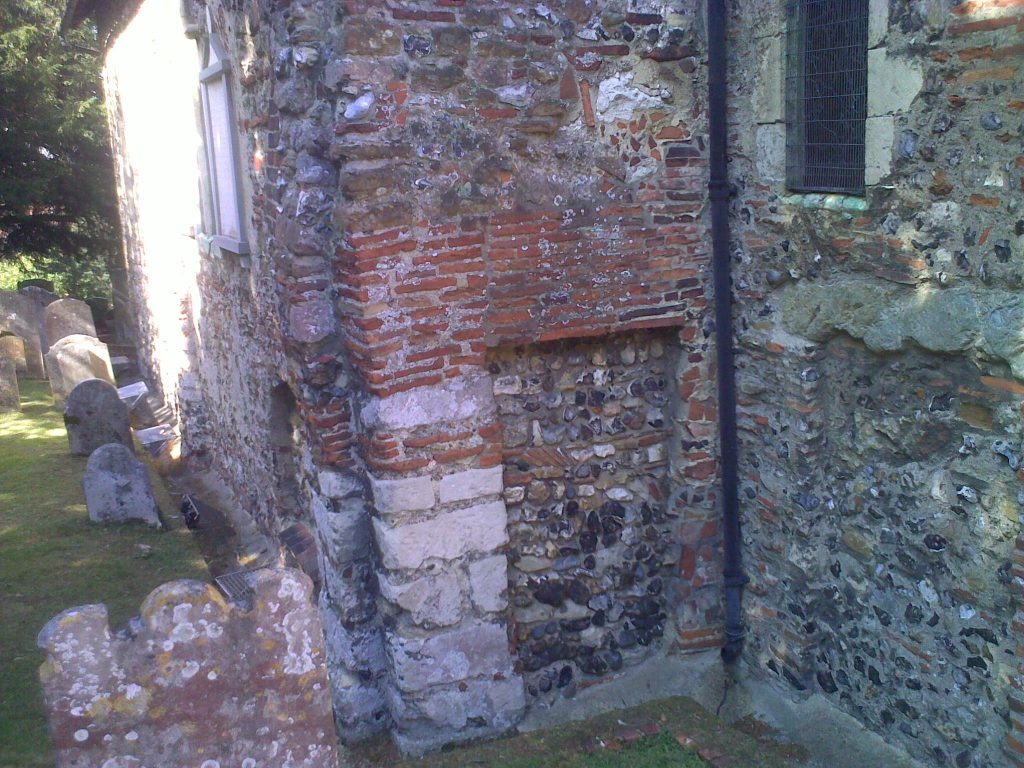
It is possible to argue that Gregory’s encounter is why we are called English, because St Augustine was sent to set up the Church of the Angles, not the Church of the Saxons. Saxon was the normal name used by the Romans for Germanic barbarians. As the name of the Church, the term Anglish/English became a relatively neutral term that the various shades of Germanic peoples in Britain could unite under in the face of the later Viking threat.
The mission was sent in AD 597 and Pope Gregory died in AD 604.
I am just returning to the UK after a visit to Amsterdam. I’ve spent the last two days largely in the Rijksmuseum where I came across this painting which features Pope Gregory the Great on the left hand part of the Triptych. It shows Utrecht in the background.
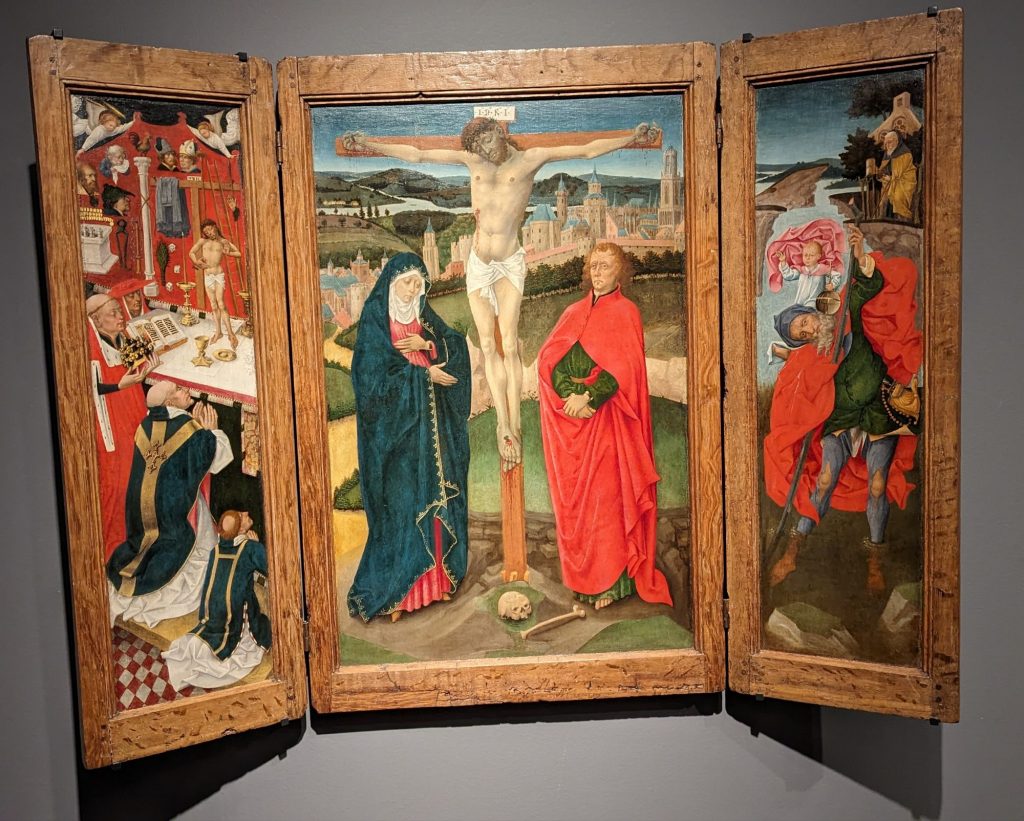
St Gregory is in green kneeling down. What is fascinating is all the paraphernalia of the Crucification above Gregory’s head. You’ll see 30 pieces of silver, dice to decide who gets Jesus’ robes, flails and torture devices, sponge and spear etc.
